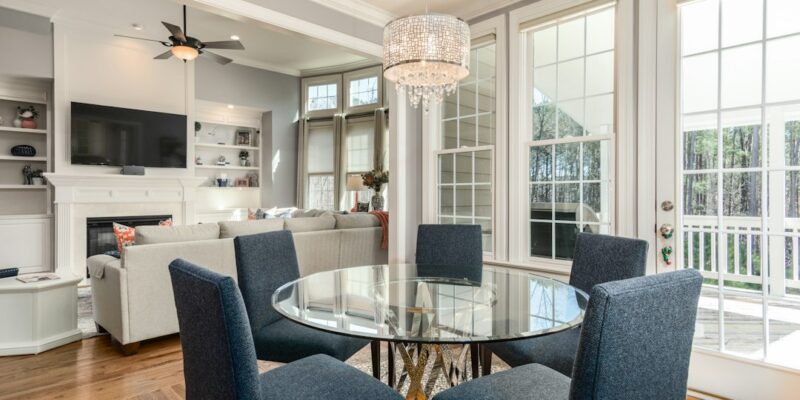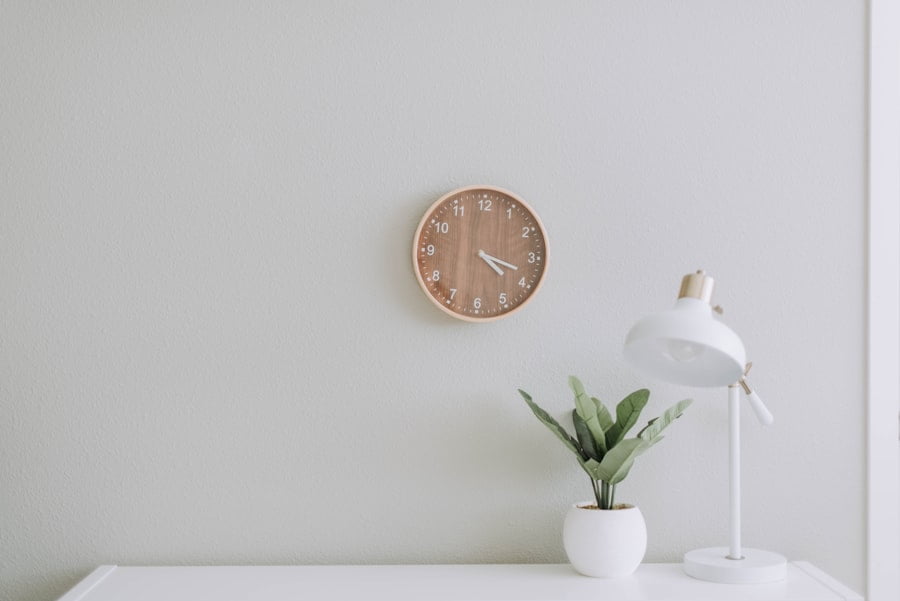
Stay Fit and Active at Home: Effective Workouts for Senior Citizens
Staying fit and active is important for people of all ages, but it becomes even more crucial as we age. As a senior citizen, maintaining a regular exercise routine can have numerous physical and mental benefits. Exercise not only helps to keep the body strong and healthy, but it also improves mood, reduces stress, and enhances overall well-being. In this article, we will explore the importance of staying fit and active as a senior citizen, the benefits of exercising at home, safety tips for home workouts, and various exercises that can be done at home to improve strength, cardiovascular health, balance, flexibility, and mobility.
Key Takeaways
- Staying fit and active is important for senior citizens to maintain their physical and mental health.
- Exercising at home can provide numerous benefits, including convenience and cost-effectiveness.
- Senior citizens should prioritize safety during home workouts by consulting with a doctor and using proper equipment.
- Warm-up exercises can help prevent injury and prepare the body for more intense activity.
- Strength training, cardiovascular, balance and flexibility, and chair exercises can all be effective for senior citizens, and cool-down exercises can help the body recover after a workout.
Importance of staying fit and active for senior citizens
Regular exercise is essential for senior citizens to maintain good health and quality of life. Physical activity helps to improve cardiovascular health, strengthen muscles and bones, maintain a healthy weight, and reduce the risk of chronic diseases such as heart disease, diabetes, and certain types of cancer. Exercise also plays a crucial role in maintaining cognitive function and mental well-being. It can help to improve memory, enhance cognitive abilities, reduce the risk of dementia and Alzheimer’s disease, and alleviate symptoms of depression and anxiety.
On the other hand, leading a sedentary lifestyle can have detrimental effects on the health of seniors. Lack of physical activity can lead to muscle weakness, loss of bone density, decreased flexibility and mobility, increased risk of falls and fractures, weight gain, and a higher likelihood of developing chronic diseases. It can also contribute to feelings of isolation, depression, and decreased overall quality of life. Therefore, it is important for seniors to incorporate regular exercise into their daily routine to maintain optimal health and well-being.
Benefits of exercising at home
Exercising at home can be a convenient and safe option for senior citizens. Many seniors prefer to exercise in the comfort of their own homes because it eliminates the need to travel to a gym or fitness center. It also allows them to exercise at their own pace and on their own schedule. Exercising at home can be particularly beneficial for seniors with limited mobility or health conditions that make it difficult to leave the house.
In addition to convenience, exercising at home can also be cost-effective. Gym memberships and personal trainers can be expensive, especially for seniors on a fixed income. By exercising at home, seniors can save money while still reaping the benefits of regular physical activity. There are many resources available online and in books that provide guidance and instructions for home workouts, making it easy for seniors to find exercises that suit their needs and abilities.
Safety tips for senior citizens during home workouts
| Safety Tips for Senior Citizens During Home Workouts |
|---|
| 1. Consult with a doctor before starting any exercise program. |
| 2. Warm up and cool down properly to prevent injury. |
| 3. Use proper equipment and make sure it is in good condition. |
| 4. Start with low-impact exercises and gradually increase intensity. |
| 5. Stay hydrated and take breaks as needed. |
| 6. Avoid exercises that cause pain or discomfort. |
| 7. Exercise in a well-lit and well-ventilated area. |
| 8. Have a phone nearby in case of emergency. |
| 9. Consider working with a personal trainer or physical therapist. |
| 10. Listen to your body and stop exercising if you feel dizzy or lightheaded. |
Before starting a new exercise routine, it is important for senior citizens to consult with their doctor, especially if they have any underlying health conditions or concerns. A doctor can provide guidance on what types of exercises are safe and appropriate based on an individual’s health status. They can also help to identify any potential risks or modifications that may need to be made.
Creating a safe workout environment at home is also crucial. Seniors should ensure that they have enough space to move around freely and safely. It is important to remove any obstacles or hazards that could cause trips or falls, such as loose rugs or cluttered areas. Seniors should also wear appropriate footwear and clothing that provides support and comfort during exercise. Additionally, it is important to start slowly and gradually increase the intensity and duration of workouts to avoid overexertion or injury.
Warm-up exercises for senior citizens
Before starting any exercise routine, it is important for senior citizens to warm up their muscles and prepare their bodies for physical activity. Warm-up exercises help to increase blood flow, loosen up the joints, and reduce the risk of injury. Some gentle warm-up exercises that seniors can do at home include marching in place, shoulder rolls, arm circles, ankle rotations, and gentle stretching. These exercises can be done for a few minutes before moving on to more intense activities.
Strength training exercises for senior citizens

Strength training is an important component of any exercise routine, especially for senior citizens. It helps to build and maintain muscle mass, improve bone density, increase metabolism, and enhance overall strength and balance. Strength training exercises can be done at home with minimal equipment, such as resistance bands or hand weights. Some examples of strength training exercises for seniors include squats, lunges, bicep curls, tricep dips, and push-ups against a wall or countertop. It is important to start with light weights or resistance and gradually increase as strength improves.
Cardiovascular exercises for senior citizens
Cardiovascular exercise is crucial for maintaining heart health and improving circulation. It helps to strengthen the heart muscle, lower blood pressure, reduce the risk of heart disease, and improve overall endurance. There are many cardiovascular exercises that can be done at home without the need for special equipment. Walking is one of the best forms of cardiovascular exercise for seniors. It is low-impact, easy to do, and can be done indoors or outdoors. Other options include cycling on a stationary bike, dancing, swimming (if a pool is available), or following along with an aerobics or dance workout video.
Balance and flexibility exercises for senior citizens
Maintaining good balance and flexibility is important for seniors to prevent falls and maintain mobility. Balance exercises help to improve stability and coordination, while flexibility exercises help to keep muscles and joints supple. Yoga and tai chi are excellent options for seniors to improve balance and flexibility at home. These practices incorporate gentle movements, stretching, and breathing exercises that promote relaxation and mindfulness. There are many online resources available that provide guided yoga or tai chi classes specifically designed for seniors.
Chair exercises for senior citizens
For seniors with limited mobility or balance issues, chair exercises can be a great option. These exercises can be done while sitting in a chair and help to improve strength, flexibility, and circulation. Some examples of chair exercises include leg lifts, arm curls with hand weights, seated twists, and ankle circles. Chair exercises can be modified to suit individual needs and abilities, making them accessible for seniors of all fitness levels.
Cool-down exercises for senior citizens
After completing a workout, it is important for senior citizens to cool down and stretch their muscles to prevent injury and reduce muscle soreness. Cool-down exercises help to gradually lower the heart rate and bring the body back to a resting state. Some gentle cool-down exercises that seniors can do at home include walking or marching in place at a slower pace, gentle stretching of the major muscle groups, and deep breathing exercises. Cooling down after exercise can also help to promote relaxation and reduce stress.
Staying fit and active is crucial for senior citizens to maintain good health, independence, and overall well-being. Regular exercise has numerous physical and mental benefits, including improved cardiovascular health, increased strength and flexibility, reduced risk of chronic diseases, enhanced cognitive function, and improved mood. Exercising at home can be a convenient and cost-effective option for seniors, allowing them to exercise at their own pace and on their own schedule. By incorporating a variety of exercises into their routine, such as warm-up exercises, strength training, cardiovascular exercises, balance and flexibility exercises, chair exercises, and cool-down exercises, seniors can improve their overall fitness and quality of life. It is never too late to start exercising – even a few minutes of physical activity each day can make a significant difference in the health and well-being of senior citizens.
FAQs
What are home workouts for seniors?
Home workouts for seniors are exercises that can be done at home without the need for any special equipment or gym membership. These workouts are designed to help seniors maintain their physical health and fitness.
Why are home workouts important for seniors?
Home workouts are important for seniors because they help improve their strength, flexibility, balance, and overall health. Regular exercise can also help prevent chronic diseases and improve mental health.
What are some examples of home workouts for seniors?
Some examples of home workouts for seniors include walking, yoga, stretching, resistance band exercises, and bodyweight exercises such as squats and lunges.
How often should seniors do home workouts?
Seniors should aim to do home workouts at least three to four times a week. However, it is important to consult with a healthcare professional before starting any new exercise routine.
What are the benefits of home workouts for seniors?
The benefits of home workouts for seniors include improved strength, flexibility, balance, and overall health. Regular exercise can also help prevent chronic diseases and improve mental health.
Are there any risks associated with home workouts for seniors?
There are some risks associated with home workouts for seniors, such as the risk of injury or falls. It is important to consult with a healthcare professional before starting any new exercise routine and to start slowly and gradually increase intensity.


















